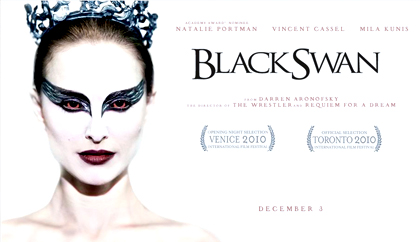If you’ve seen Black Swan, it’s likely that the beautiful but agonizing dénouement, when Natalie Portman’s Nina transforms into the title winged creature, is indelibly etched into your mind’s eye. Visual effects studio LOOK Effects created over 200 shots for this multiple Academy Award-nominated movie, including the unforgettable visual imagery in the final scene when Nina spins off into madness.

LOOK Effects (LOOK) is a long-time NVIDIA customer, with 30 artists from its New York and Los Angeles studios working on Quadro professional graphics processing unit (GPU)-equipped workstations. On Black Swan, Quadro solutions played a key role in the creation of Portman’s transformational scene, enabling director Darren Aronofsky to work closely with lead 3D artist Shawn Lipowski and quickly iterate shots for review. The breathtaking sequence also clinched a British Academy of Film and Television Arts (BAFTA) Special Visual Effects award nomination for LOOK. “In the Black Swan transformation sequence there were over 11,000 computer generated (CG) feathers, made up of millions of polygons. With the NVIDIA Quadro cards we were able to work more interactively, benefiting from high quality previews of these massively large files,” said Lipowski. “On a 30-second shot, when you’re animating all day, the extra speed of the Quadro matters a lot, enabling more fine tuning and ultimately, higher quality results.”
The complex transformational scene starts with a shot of Portman looking down at her hands as animated bumps rise up on her skin and erupt into quills that break out of her arms. The scene then moves to a 30-second Steadicam shot where she spins in a long series of pirouettes as the feathers sprout painfully from her shoulders and back, then develop into full, animated wings. The scene, which combines motion capture data, live action plates, animation and effects, also features a computer-generated orchestra.
“We built the orchestra in the 3D workspace of The Foundry’s Nuke, so we were able to take advantage of the Quadro graphic cards there too,” said Lipowski. LOOK also used the NVIDIA GPU-accelerated GenArts Sapphire plugins for Adobe After Effects to generate effects for the film. Rendering was completed in mental ray, from NVIDIA subsidiary mental images, using the software’s architectural materials as shaders.
The 11,000 feathers LOOK created for the transformation scene were based on high-resolution scans of actual tundra swans, and Lipowski built detailed feather geometry for quills, as well as complicated rigs to form the feathers individually. “The wings are long—they come two to three feet off her arms, plus they flex and bend as she whips around,” said Lipowski.
“That’s a huge amount of geometry for a graphics card to process, and NVIDIA Quadro handled it perfectly. The other reason we use NVIDIA cards is because of the driver stability. It’s just better. At times, that reliability means more to me than speed, because to ever have a crash is a huge problem,” explained Michael Oliver, Director of Technology at LOOK Effects.
Quadro’s speed was an advantage in enabling director Aronofsky to be heavily involved in the big transformation scene. Protozoa Pictures, Aronofsky’s production company is co-located with the LOOK Effects New York facility. “Darren had a strong vision for what the transformation scene needed to look like. He was coming into the office regularly and working over my shoulder. Every time I had to generate a new version I was doing 2D animated maps in Nuke and After Effects then bringing those into Maya to generate the feathers. It was a lot of back and forth. The speed of Quadro made it practical for us to work iteratively to get it exactly right,” Lipowski concluded.
LOOK is currently standardized on NVIDIA Quadro cards for the speed, reliability and interactivity that they provide professional digital artists. The facility continues to find new ways to accelerate production workflow and is investigating GPU accelerated fluid simulations for future productions. The company’s current project slate includes the films Limitless, Fast and Furious 5, and A Little Bit of Heaven; and television projects: Lost, Bones, No Ordinary Family and others.
Bulletproof Outlaws
News Letter
Latest News
- Zombies Get The motion504 Treatment In New Chiller Promo For “Remains” Thriller
- Insomniac Games Uses Autodesk Software Suite to Up the Ante for ‘Resistance 3’
- Pixomondo Leads VFX For Martin Scorsese’s Hugo
- Stereobank Announces the Addition of Super Slow Motion 3D Footage
- BIGSMACK Creates Brand Campaign For National Geographic International
- House of Moves Develops Eye Tracking Process for Film and Game Animation
- Vicon House of Moves Captures Crash Test Performance for Lexus "Light" Commercial
- Tag Games Uses Autodesk 3ds Max for "Funpark Friends" 3D Mobile Game
- Brickyard VFX Creates Box Set for ESPN
- Digital Domain and Adam Berg Tap Virtual Production for Gears of War 3 "Dust to Dust"
- Brickyard VFX Helps Saatchi & Saatchi LA and 2012 Toyota Camry Do ‘Donuts’ Around Competition
Interviews
- Yash Chavan New Media Evangelist
- Sindhuja Rajamaran the youngest CEO and 2D Animator of India
- Exploring ‘Backstage Pass’ – The School of Gaming!
- ‘Toonpur Ka Superhero’ Kireet Khurana!
- Kumar Chandrasekaran, Head of Operations at Sanraa Media
- An interview with the ‘Prince of Vriksha’!
- Arun Suryawanshi – Academic Director of CANMAS
- Arunkumar Boyidapu - Lighting & Composting Artist at Sparky Animation
- Asadul Islam – Student VFX Artist
- Dominic Chander – Head of Animation at Sun Animatics
- Anjan Cariappa an Independent Animation Consultant
- Sabeer Ahluwalia the ‘Quantum Gabriel’!
- Vaseem Ashar – VFX Supervisor at ThinkingHands
- Alexander Lindner – Visual Consultant
- Kalyan Gali - Creative Head at Icronex Technologies
- Interview with Sathya Narayanan - Senior Production Coordinator at Amskray Visual Effects Studio
- Kushagra Gour – Founder and Owner of CCPRO Games

